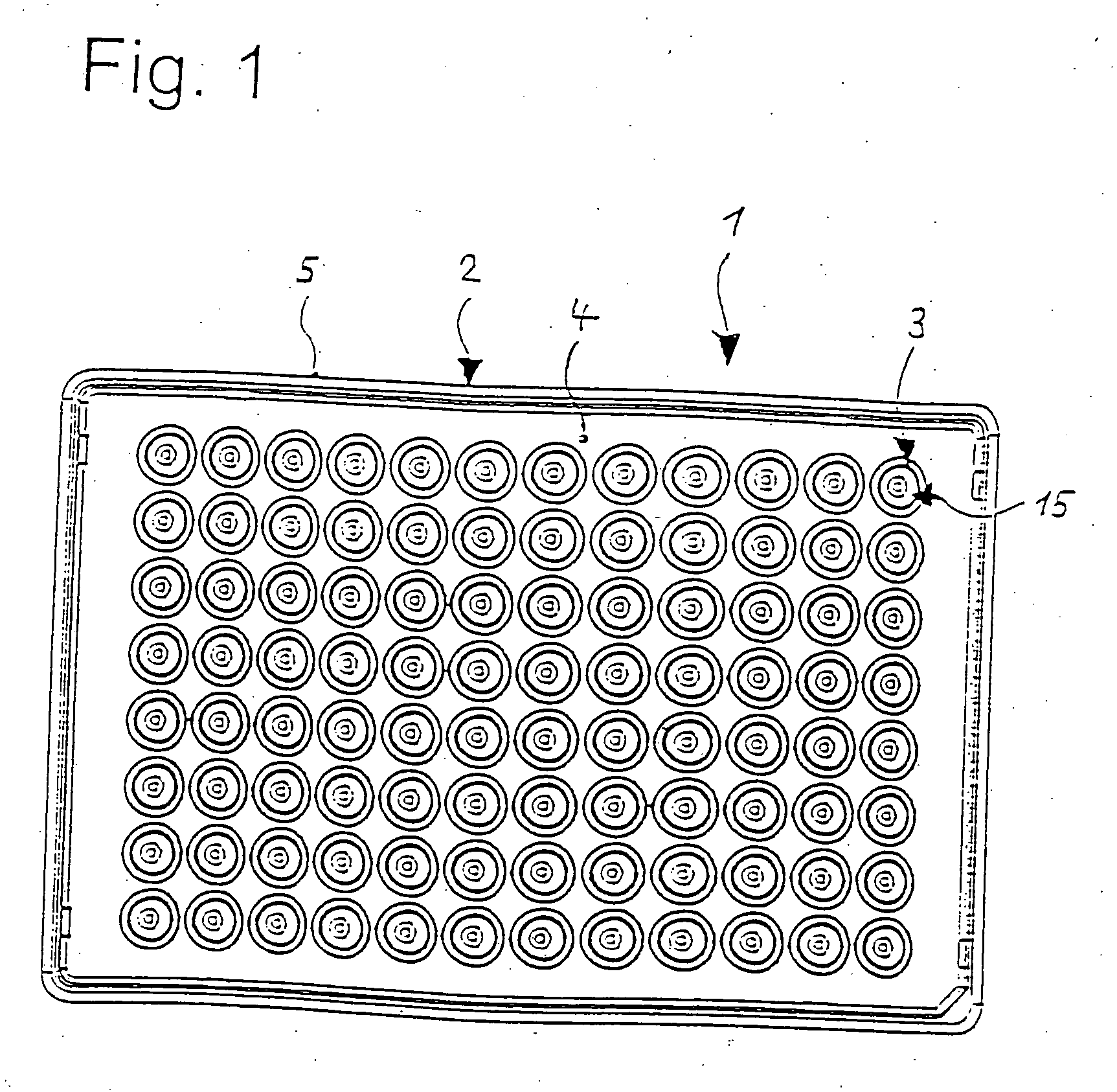Microtitration plate
- Summary
- Abstract
- Description
- Claims
- Application Information
AI Technical Summary
Benefits of technology
Problems solved by technology
Method used
Image
Examples
Embodiment Construction
[0041] In the drawings, the same elements are designated by identical reference numerals. The description pertaining thereto applies to all of the embodiments.
[0042] Referring to FIGS. 1 through 3, a microtitration plate 1 comprises a frame 2 and a multiplicity of vessels 3. There is a total of 96 vessels arranged in eight columns and twelve rows.
[0043] The frame 2 has a substantially rectangular plate 4 the outer edge of which is surrounded by a bordering 5 which protrudes approximately perpendicular from the underside of the plate 4, i.e. beyond the vessels 3. At bottom, the bordering 5, as is known, has an expansion 6 which enables stacking on the upper surface of an appropriate microtitration plate 1.
[0044] The frame 2 has a total of ninety-six holes 2′ in the plate 4. These have a profile 2″ of the cross-section which widens towards the upper surface 7 of the plate 4 in two portions of different conicity and towards the underside 8 of the plate 4 in a conical portion.
[0045]...
PUM
| Property | Measurement | Unit |
|---|---|---|
| Thickness | aaaaa | aaaaa |
| Softness | aaaaa | aaaaa |
Abstract
Description
Claims
Application Information
 Login to View More
Login to View More - R&D
- Intellectual Property
- Life Sciences
- Materials
- Tech Scout
- Unparalleled Data Quality
- Higher Quality Content
- 60% Fewer Hallucinations
Browse by: Latest US Patents, China's latest patents, Technical Efficacy Thesaurus, Application Domain, Technology Topic, Popular Technical Reports.
© 2025 PatSnap. All rights reserved.Legal|Privacy policy|Modern Slavery Act Transparency Statement|Sitemap|About US| Contact US: help@patsnap.com



